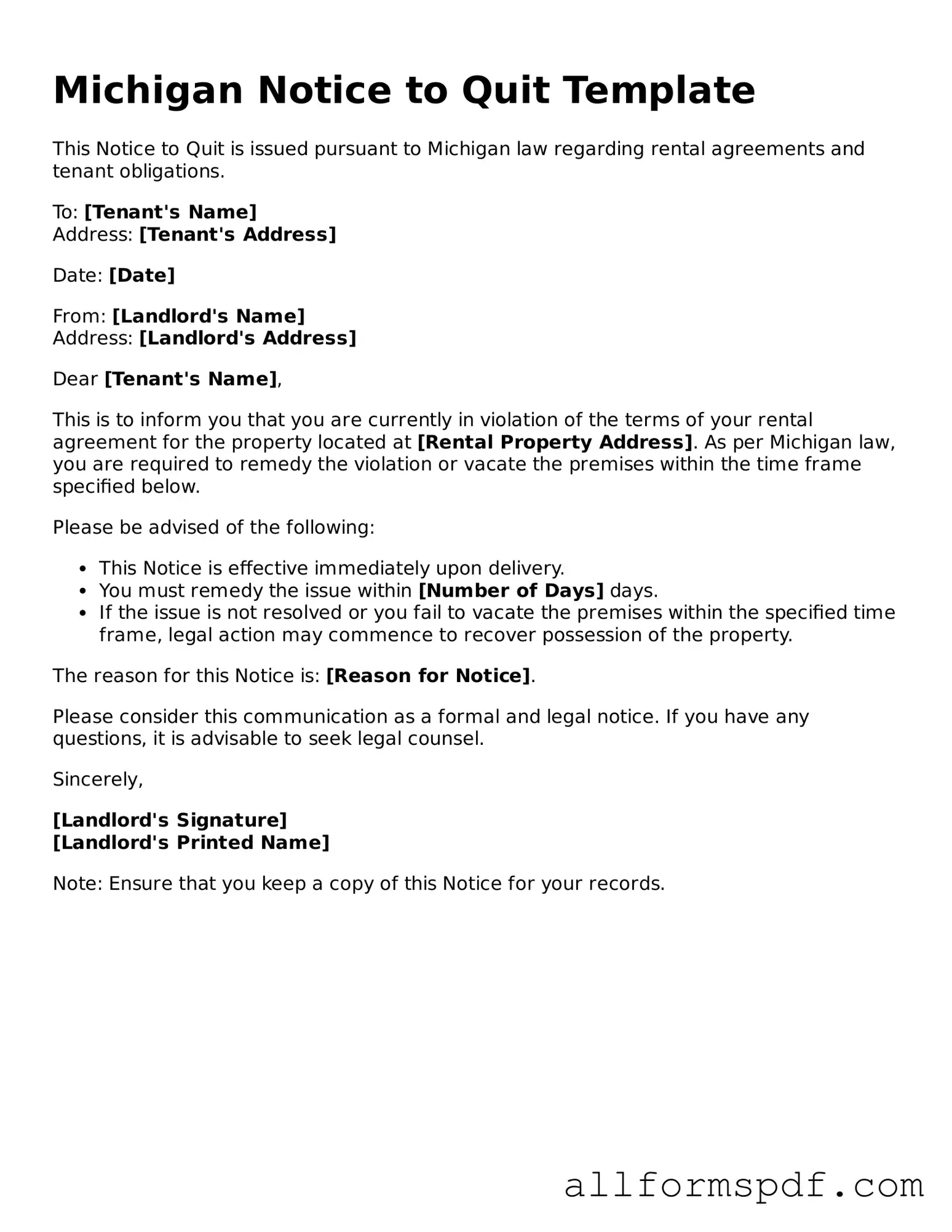Filling out the Michigan Notice to Quit form can be a straightforward process, but many people make common mistakes that can lead to complications. One of the most frequent errors is not providing the correct tenant information. It's essential to ensure that the name and address of the tenant are accurate. An incorrect name could delay the eviction process or even render the notice invalid.
Another mistake involves failing to specify the reason for the notice. The form requires a clear explanation of why the notice is being issued, such as non-payment of rent or lease violations. Omitting this information can create confusion and may lead to disputes later on.
Many individuals overlook the importance of including the date the notice is served. This date is crucial because it determines the timeline for the tenant's response. Without a proper date, the notice may not be enforceable, and the landlord could face unnecessary delays.
In addition to the date, people often forget to sign the form. A signature is a vital part of the document. Without it, the notice may be considered incomplete. It’s important to ensure that the form is signed and dated by the landlord or their authorized representative.
Another common issue is not providing the correct number of days for the tenant to respond. Michigan law stipulates specific timeframes depending on the reason for the notice. Miscalculating these days can lead to legal challenges and prolong the eviction process.
Some landlords mistakenly use outdated versions of the form. Laws and regulations can change, and using an old form may not comply with current legal requirements. Always check to ensure that the most recent version of the Notice to Quit form is being used.
People sometimes fail to deliver the notice properly. The law requires that the notice be served in a specific manner, such as through personal delivery or by mailing it. Ignoring these methods can result in the notice being deemed invalid.
Additionally, some individuals neglect to keep a copy of the completed notice for their records. Having a copy is crucial for future reference, especially if the situation escalates to court proceedings. This record can serve as proof that the notice was issued and when it was delivered.
Another mistake involves not being aware of local ordinances that may affect the eviction process. Different cities may have additional requirements or protections for tenants. Ignoring these local laws can lead to complications and potential legal issues.
Lastly, many landlords underestimate the importance of consulting with a legal professional. While filling out the form may seem simple, understanding the implications of each section can be complex. Seeking legal advice can help ensure that the notice is filled out correctly and in compliance with all applicable laws.
